Building Expansion: Santo Tomás de Aquino Parish
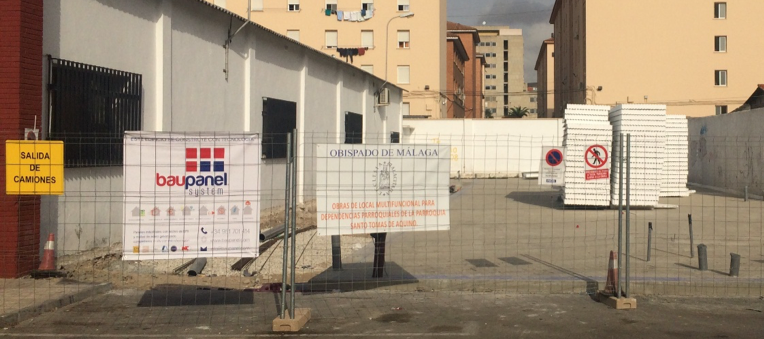
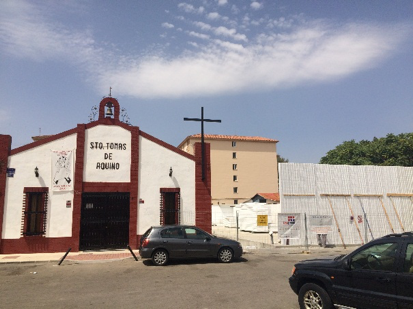
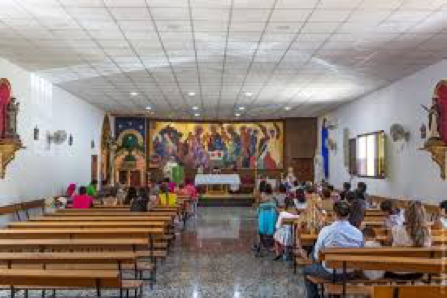
The Santo Tomás de Aquino Parish was inaugurated in 1976 on Salvador Dalí Street No. 3 in the populous Martiricos neighborhood of the city of Malaga.
It consists of a simple nave with a gabled roof and dimensions of 10 meters wide by 35 meters long and 5 meters high.
In 2015, the Bishopric of Malaga, at the request of the parish priest D. Juan Manuel González Ruíz, began to study the expansion of the parish with the idea of having a new necessary space that would allow meetings of up to 200 people and a dining room with capacity for some 50 persons.
From an architectural point of view, it was decided that the new work should repeat the current design of the parish with its gabled nave and similar dimensions.
The expansion works were initially conceived using traditional construction techniques, with a reinforced concrete foundation slab, an independent metal structure, exposed plastered brick walls and a sandwich panel roof with transversal reinforcements to support mobile walls with a weight of 1600 kg. .
Both the architect author of the project, Architect D. Ricardo Medina Bujalance, and Architect D. Pablo Casesnoves Campodarve, head of the technical office of the Bishopric of Málaga, agreed that the Baupanel construction system would be ideal, not only from a structural point of view, but also It would also provide the necessary thermal insulation required by the parish priest, for the greater comfort of the parishioners, reducing the need for thermal conditioning.
Construction system assembly sequence
The start of the assembly of the system is carried out on August 29, 2016.
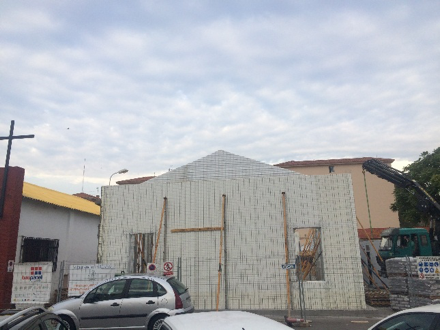
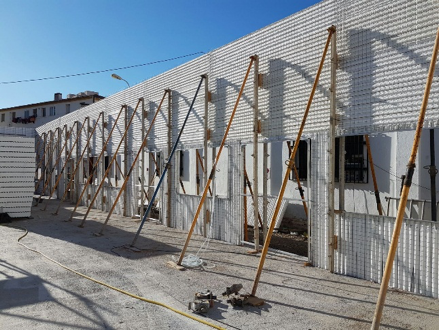
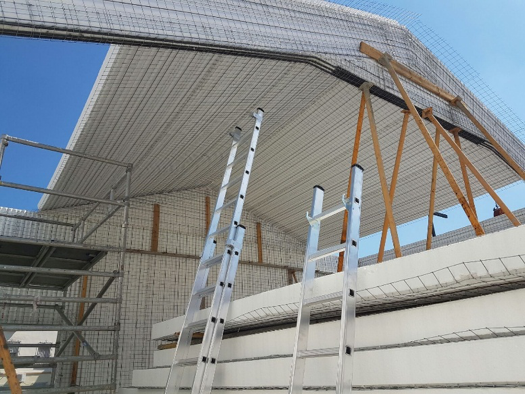
In two weeks all the walls of the parish were assembled as can be seen in the following images captured on September 16. The placement of some 500 m2 of panels almost 5 m high had been carried out with a small crew of only 3 operators.
Before 3 weeks of work were completed, the roof was already being assembled as can be seen in the following images from September 20
Before 3 weeks of work were completed, the roof was already being assembled as can be seen in the following images from September 20
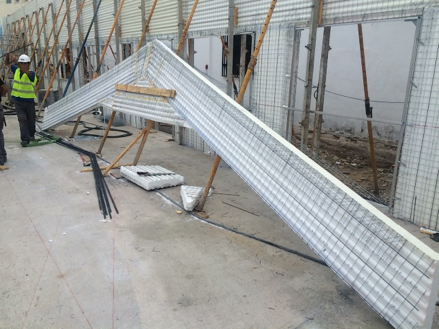
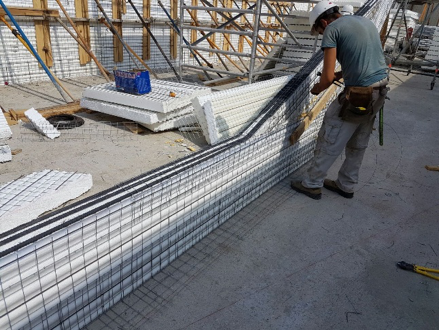
The presence of the beams made with the panel with a free span between supports of almost 10 meters can be highlighted.
The reinforcement of these beams is calculated in a similar way to a traditional reinforced concrete beam, but with the great advantage that its own weight is 70% less.
The pneumatic projection works of the walls and roof were completed on October 21, 2016, that is to say that after 7 weeks from the beginning the gray work had been completed and the parish was already in the beginning phase of the finishes.
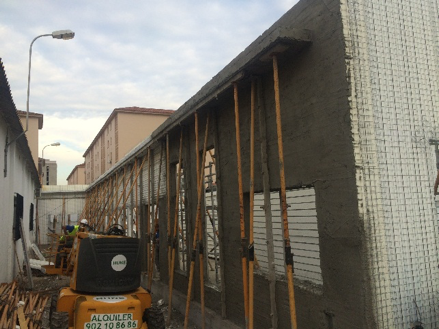
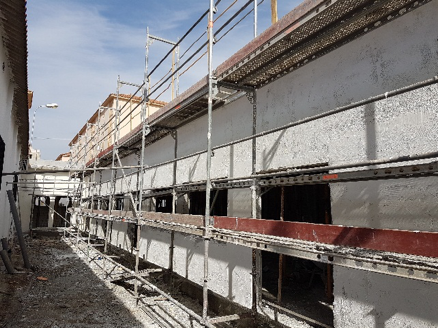
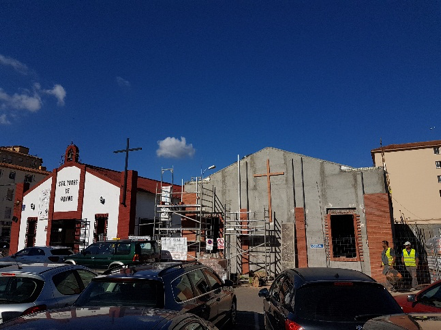
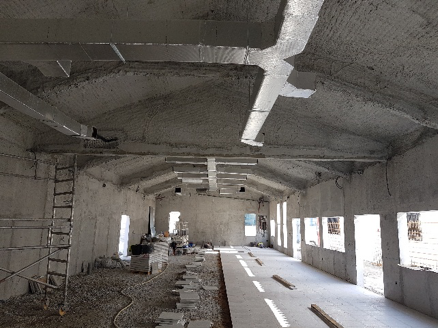
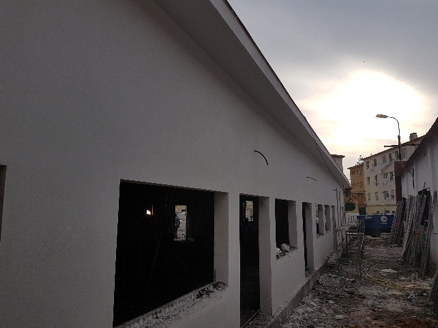
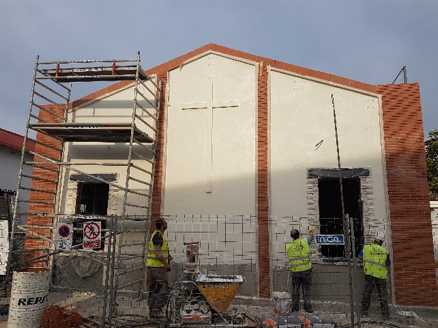
Foundation
A very important particularity of this work was the great savings obtained in the foundation works. Indeed, the original project provided for a deep foundation made with 18 m deep reinforced concrete piles on which a 50 cm thick slab would rest.
By using the Baupanel® System construction system, piling could be avoided and all that was needed was an improvement of the ground by means of soil-cement columns only 5.50 m deep with a reinforced concrete slab 25 cm thick (half that of the projected slab).
Illustrated below are the results of the two penetrometers (superheavy dynamic penetration DPSH)
The comparative economy obtained has been more than 75% and this frequently occurs when using this construction technology.
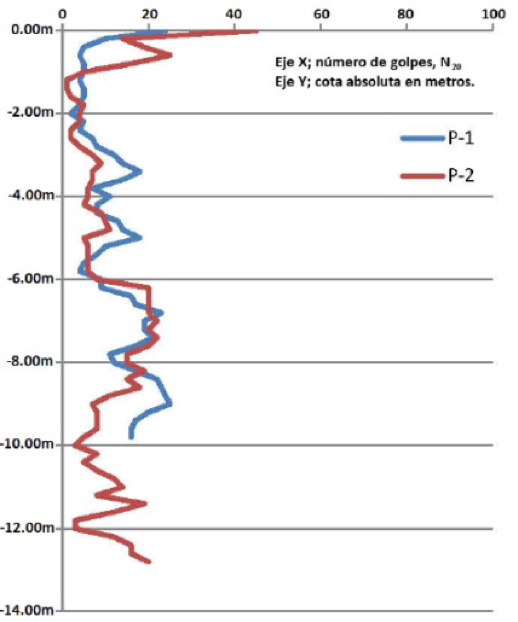
This is mainly due to three determining factors provided by the Baupanel® System:
- Reduction of more than 50% of the own weight with respect to the original project solution. This circumstance allowed the foundation with a tension in the support plane of only 0.37 Kg/cm2. Keep in mind that this stress value is lower than the admissible stress of a fluid clayey soil (0.5 Kg/cm2).
- The stiffening of the foundation slab is carried out by the walls that support it. Unlike the masonry walls, which are deformable elements, the walls of the construction system are elements of reinforced concrete, lightened by the gap occupied by the insulating element, but with a very high flexural rigidity E x I; Given that in our case the walls have a height of 5 m, the rigidity value is greater than 218,000 Tm2.
- The charges reach the ground in a distributed manner. As there are no pillars, the concrete slabs that support the constructions carried out with the construction system do not require any kind of specific reinforcements in coincidence with the loads, nor are they required to increase the edge on the edges to form perimeter bands, since the The wall itself that attacks materializes it.
Foundation
A very important particularity of this work was the great savings obtained in the foundation works. Indeed, the original project provided for a deep foundation made with 18 m deep reinforced concrete piles on which a 50 cm thick slab would rest.
By using the Baupanel® System construction system, piling could be avoided and all that was needed was an improvement of the ground by means of soil-cement columns only 5.50 m deep with a reinforced concrete slab 25 cm thick (half that of the projected slab).
Illustrated below are the results of the two penetrometers (superheavy dynamic penetration DPSH)
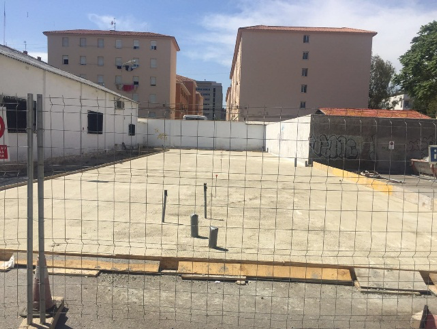
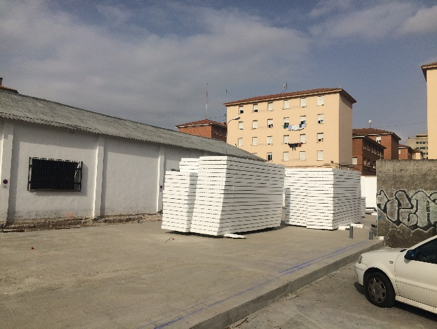
Views of the slab – foundation slab of the building with the panels connected
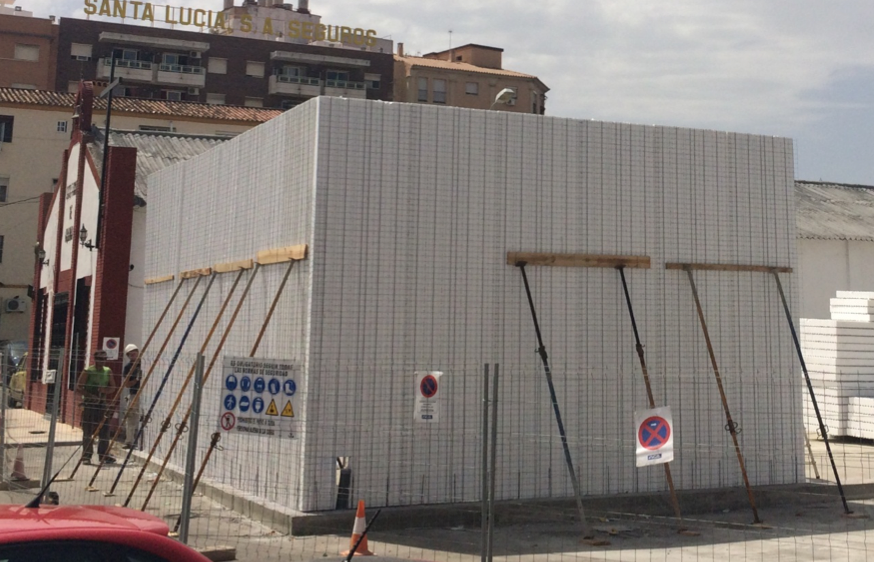
The repercussion of the savings in foundations in cases like the one analyzed or similar can be between €100 and €150 per square meter of built work.
In addition to this advantage, it must be considered that there will also be significant savings in the execution period and that the building will be eligible for the highest energy ratings at no added cost.
Interesting alternative to the traditional system, right?







